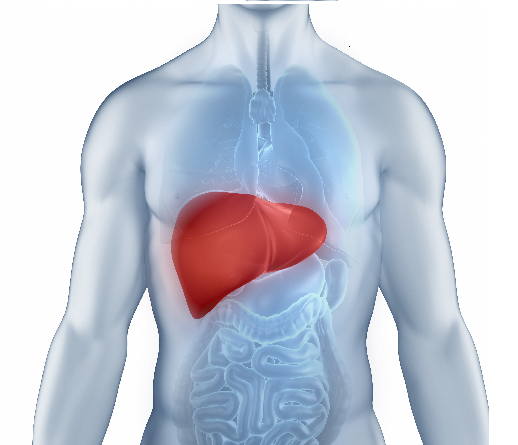Pinworm Infection: Causes, Symptoms, Diagnosis and Prevention
- 24 Sep, 2024
- Written by Team Dr Lal PathLabs
Medically Approved by Dr. Seema
Table of Contents
Pinworms, or Enterobius vermicularis, are tiny, thin, white roundworms that infect humans’ intestines. According to Johns Hopkins Medicine, pinworm infections are one of the most common parasitic infections worldwide, affecting 40 million each year, with children being the most susceptible. In this article, we cover what is pinworm infection, its causes and symptoms.
What is Pinworm Infection?
Pinworms are part of the roundworm family. They are small, white, thread-like worms measuring about 1/4 to 1/2 inches long. Due to their tiny size and colour, they are often difficult to see with the naked eye.
The adult female pinworms migrate to the area around the anus to lay their eggs, usually during the night, which leads to the primary pinworm symptom of intense itching. When a person scratches the area, the eggs can get onto their fingers or under their fingernails.
People, especially children, can accidentally ingest or inhale the eggs by touching contaminated objects or surfaces, touching their mouths, or breathing in airborne eggs.
Once the eggs are ingested, they hatch in the small intestine, and the larvae move to the large intestine to develop into adult worms. The cycle continues as the mature females migrate to the anus to lay more eggs.
While pinworms do not typically cause serious health issues, the infection can be highly uncomfortable and easily spread within households, schools, and other close-contact environments.
What Causes Pinworm Infection?
The primary cause of a pinworm infection is ingesting or inhaling pinworm eggs. Other causes include:
1. Poor Hygiene: Not washing hands properly after using the toilet or before eating allows eggs to be transferred to the mouth.
2. Close Contact: Pinworms easily spread in close-contact settings like schools and homes through direct contact or shared items.
3. Contaminated Surfaces: Eggs can survive for several weeks on surfaces like bedding, toys, and bathroom fixtures, leading to infection when touched.
4. Inhalation of Eggs: Eggs can become airborne and be inhaled, especially in contaminated environments.
5. Reinfection: Reinfection is common if hygiene practices aren’t maintained, allowing the cycle to continue.
What are the Symptoms of Pinworm Infection?
The most common pinworm symptoms include:
1. Itching Around the Anus: This is the primary symptom, especially pronounced at night when female worms lay their eggs near the anus, causing intense itching.
2. Sleep Disturbances: Itching discomfort often disrupts sleep, leading to restlessness, irritability, and fatigue during the day.
3. Abdominal Pain: Some may experience mild abdominal pain or discomfort due to the infection.
4. Nausea: In more severe cases, the infection can cause nausea or a reduced appetite, although this is a less common pinworm symptom.
5. Visible Worms: In some instances, tiny white worms may be visible in the stool or around the anus, particularly in the early morning.
How is Pinworm Infection Diagnosed?
Pinworm infections are typically diagnosed through:
1. Tape Test: It is the most common diagnostic method that involves pressing a piece of clear tape against the skin around the anus in the morning. The tape is then examined under a microscope for pinworm eggs.
2. Visual Inspection: In some instances, pinworms can be directly observed around the anus, especially at night when the worms are most active.
3. Stool Sample: Although less frequently used, a stool sample may be examined to identify the presence of adult worms.
How to Prevent Pinworm Infection?
Preventing pinworm infections involves maintaining good hygiene practices and minimising the spread of eggs:
1. Regular Handwashing: Thoroughly cleaning hands with water and soap, particularly after using the restroom or changing diapers, can help with pinworm treatment.
2. Keep Nails Short and Clean: Short, clean fingernails reduce the risk of spreading eggs through scratching.
3. Avoid Nail-Biting and Thumb-Sucking: Discourage these habits, especially in children, as they can transfer eggs from hands to mouth.
4. Frequent Cleaning: Regularly wash bedding, clothing, and towels in hot water to kill lingering eggs. Clean and disinfect common surfaces, such as bathroom fixtures, door handles, and toys.
5. Daily Bathing: Bathing every morning can help remove eggs from the skin, reducing the chance of spreading them to others or reinfecting oneself.
Although uncomfortable and highly contagious, pinworm infections are manageable with proper hygiene, timely treatment, and preventive measures. Maintaining good hygiene practices and seeking medical advice can help control the spread of pinworms, ensuring a healthier environment for all.
For those who suspect a pinworm infection, book a stool examination test with Dr Lal PathLabs today.
FAQs
1. How do you remove pinworms?
Pinworm treatment for adults includes antiparasitic medications prescribed by a doctor and strict hygiene measures to prevent reinfection.
2. How long do pinworms live?
Pinworms can live for about 4 to 6 weeks in the human body.
3. What are pinworms examples of?
Pinworms are a type of parasitic roundworm, specifically classified as a nematode.
4. Will pinworms go away on their own?
Pinworm infections typically do not go away independently and require treatment with antiparasitic medications to eliminate the disease and prevent re-infestation.















